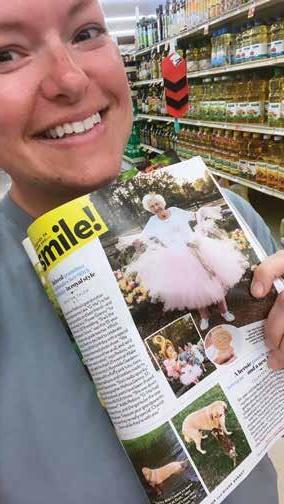
16 minute read
A Photographer’s Dream Come True: Grandma’s
from FF September 2021
by Forsyth Mags
Grandma’s Photo Shoot Receives National Attention
In 2012, Melissa purchased her first ‘big’ camera, a Nikon D5600, prior to a first anniversary trip to NYC with her husband, Grayson. “I used to look at other photographers’ websites and daydream about how I could do it, too. I confided in some friends early on that I would be a photographer…one day. I started by taking photos for free, or next to nothing, just to get some experience. I photograph families, children, individuals, and couples; I love doing shoots outdoors, but also do in-home sessions using natural lighting. But the photos that caught the attention of People magazine were quite special. A local family wanted to celebrate their grandma’s 90th birthday with a photoshoot, and her granddaughters, Stephanie and Jennifer, whom I knew from high school, contacted me, and the planning began,” Melissa commented.
Advertisement
Stephanie, one of the granddaughters, shared with Melissa what they were thinking for their grandma, and she was thrilled to be a part of the 90th birthday celebration.
“For the photoshoot, I looked around Reynolda Gardens, which the family chose, for the perfect spot with excellent lighting and beautiful flowers. Upon meeting Martha, G-Ma, the name her family calls her, I could tell she was ready for anything and had a playful spirit. On the day of the shoot, I had my favorite assistant, my husband, and several of the family members came, too. They brought a pink tutu, cookies with their grandma’s face on them, cake, balloons, a banner, and a fancy chair for her to sit in. Since G-Ma had such a fun personality, I had her dance in the tutu and that brought laughter to us all. I loved the photos of her naturally smiling and having fun. We had a great time. G-Ma thought the cookies were hilarious; she enjoyed the day with her family by her side. I can’t think of a better way to celebrate a 90th birthday. I will be forever grateful they asked me to do the photoshoot. It has been a wild ride from being on local newscasts, to People and Southern Living magazines. I am so thankful for such a fun experience!” stated Melissa.
BY CAROLYN S. PETERSON
Imagine being a photographer and having your photos printed in a national magazine. Local photographer Melissa Denny doesn’t have to imagine it, because it happened to her, after photos of a local grandma celebrating her 90th birthday went viral and found their way to People magazine.
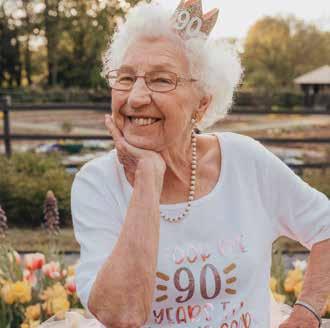
Melissa Denny grew up in Rural Hall, NC, with her parents, sister, and a supportive extended family. “My parents and grandparents always made it known that I could do anything I set my mind to. Growing up, my mom, Robin, had a passion for taking photos; most were of my sister and me, our family, or nature. I guess a part of my passion came from her as well as my grandpa Fred. My precious grandmas, Shirley and Jerri, I called them Ma and Memaw, passed away earlier this year, but they were so excited about my photography and would be elated that I made it to People magazine.” said Melissa. Early on, Melissa, who has been a sonographer since May 2011, saw photography as a creative outlet, but it has now blossomed into a great passion and business, allowing her to meet people and do what she loves.

For more info on Melissa Denny Photographer, you can find her on Facebook and Instagram at Melissa Denny Photography or call at 336-972-4221 or email at Melissa.Denny@MelissaDennyPhotography.com.
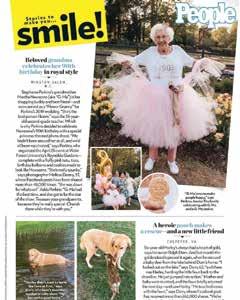
Presents the Kordick Family Farm
The open forum of a marketplace provides a refreshing getaway from shopping aisles. Each venue offers a unique setting that may include activities for children, live entertainment, and an array of foods. The curious shopper discovers she has direct access to fresh and locally grown fruits, herbs, flowers, and vegetables, dairy-based products, proteins, homemade goodies, and artisan-created, handmade crafts. In addition, the welcoming man or woman behind the table provides a small sampling of popular items. Whether you are a first-timer or repeat customer, take the time to introduce yourself, ask questions, and inquire if owners receive visitors or have a farm store. Most likely, the answer is “yes” or “it’s coming soon!”
The Mailman Knows
In 2009, Dorsey Kordick and her daughter, Brittany, arrived in Stokes County, North Carolina, ready to plant 850 handgrafted heirloom apple trees. Not the typical varieties found in grocery stores and marketplaces, but semi-dwarf trees with a long history dating back hundreds of years. Dorsey, curious whether the old, supposedly lost Southern varieties still existed, posted fliers at local haunts. Fortune arrived in the person of a well-connected man, a mail carrier, who offered to arrange introductions with Asbury community neighbors.
The Old Apple
Historians have knocked on doors to learn the stories of ten-thousand-plus long-standing heritage trees. Of course, everyone is correct; a fruit tree often has a lengthy list of names. Over time, one identity takes hold and becomes common. Fortunately, the cuttings from scionwood, grafted onto a vigorous rootstock, can produce plentiful fruit once again! Each of the 175 apple varieties, with names like Buckingham, Esopus Spitzenburg, Horse, King Luscious, and Lowry, for example, while now offering still unfamiliar tastes, currently boast a total of 1,800 trees in the Kordick orchard. If you seek to add a tree of history to your garden or orchard this fall, KFF will begin selling heirloom apple varieties at their store, at 1259 Joyce Acres Road in Westfield, and during autumn events.

At the Farm Store
Homeowners, hoping to save their precious spring buds and blossoms during below-freezing temperatures, use sheets as a layer of protection. Orchardists, on the other hand, can only pray! The Kordick Family Farm is just one of the many orchards impacted this year. While apples and other fruits are not available, the farm has an abundant harvest of fresh produce and jars of delicious apple blossom jelly, apple butter, and Baba Yaga’s Apple Cider Syrup.
Nothing signals the start of autumn like the arrival of pumpkins. With a wide selection of fall decorations for sale, including Indian corn, corn shocks, gourds, and large and small pumpkins, KFF offers fall-themed sights, tastes, and experiences for everyone!
Great Events:
JOIN THE FUN: • September 18th marks “Francisco FarmFest” along the Sunflower
Trail. One of the 12 stops occurs at KFF. Expect demonstrations of antique engines, a tobacco stick mill, a display of barn quilts, and opportunities to buy fresh produce, plants, and sunflowers!
• On September 25th, stop by and visit KFF at the Historic
“Bethabara Park Apple Fest.”
• Celebrate Halloween at the Kordick Family Farm on October 16th from 11 AM to 7 PM.
• December 10th and 11th, from 6 PM to 9 PM, the KFF hosts
“Orchard by Candlelight.”
Farm Store or Etsy
Rather than wait for a special event, you can obtain apple-based goods, fresh produce, and fall decorations by visiting the farm store. Please call (in advance) 336-351-5186 or e-mail cheers@ kordickfamilyfarm.com to schedule an appointment.
Additionally, select goods are available by shopping, “KordickFamilyFarm” at www.etsy.com.
Stay Well-Informed
News from the Apple Branch... is a monthly newsletter, brimming with current events, product availability, such as wild blackberry apple jam, and recipes that will certainly become family favorites! Sign up today at www.KordickFamilyFarm.com.
Preserving the Value of Heirlooms for Generations to Come
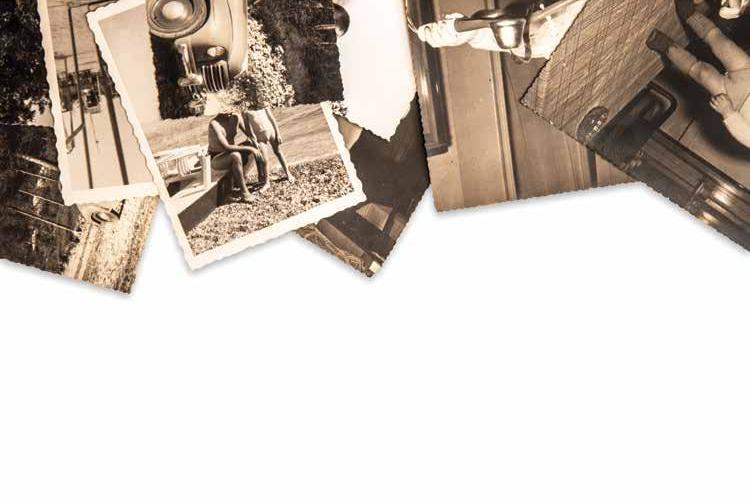
BY MEGAN TAYLOR
I grew up playing in a toy kitchen my grandfather built for my mom. This kitchen has sentimental value because it was handmade and passed down through the years. It is engrained with love and memories of past playtimes. I remember spending many hours playing restaurant or grocery store with my sister. This item is what one would consider to be an heirloom.
According to dictionary.com, an heirloom is “a family possession handed down from generation to generation.” I would like to extend this definition to also include friend possessions. Heirlooms come in all shapes and forms. They are valued items that have stories and meaning attached to them. The common types of heirlooms are jewelry, clothing, pictures, books and toys. The list also includes family recipes, artwork, furniture and sterling silver. Some of my other favorite heirlooms are my grandfather’s World War II items and one of my grandmother’s handwritten recipes carved into a wooden cutting board.
It can be difficult to determine what item can be classified as an heirloom since it could be basically anything. In the article, “15 Common Family Heirlooms You May Find in Your Home,” writer and antique collector Kate Miller-Wilson states that an heirloom should match its definition, meaning they are “intended to be handed down from one generation to the next. Although they are sometimes worth money, they don’t have to have a lot of monetary value. Instead, they provide a sense of connection between generations in a family.” When looking at an heirloom, you may feel a bond between you and other relatives. This feeling is what signifies the item is an heirloom. Heirlooms can also come from items gifted to you or shared through a friend and still have the same meaning. One thing to keep in mind is that something may be an heirloom for you and not a sibling or parent. We all have different connections to various people and objects. Don’t be offended if you find something valuable while someone else doesn’t.
Preserving Your Heirlooms
You may have a Bible that is a hundred years old and belonged to your greatgrandmother. This Bible has carefully been taken care of and preserved, allowing for it to be in your home today. It is important to save these items carefully and in particular ways.
First, make sure your heirloom is stored safely in climate-controlled areas. You should pay attention to the temperatures and moisture levels of a room where an item is being kept. Being too damp or too hot can cause damage to the heirloom.
• PAPER DOCUMENTS – Don’t fold or staple the documents. Keep them inside a Mylar or acid-free envelope and away from moisture, heat and light. Place the documents in a flat file box on its side and never upright. inside a frame or glass enclosure, they should be stored in a box with pieces of acid-free tissue between them.
• JEWELRY – Strive to keep jewelry pieces in a velvet or satin-lined box.
Silver jewelry needs to be wrapped in tissue paper or in a cloth bag.
• CLOTHING OR FABRIC ITEMS –
Since fabric is also very sensitive to moisture and light, these items should be placed in a special preservation box with tissue, muslin stuffing, mothballs or cedar chips.
Use a plastic, padded hanger if you are storing the clothes upright in a closet. Try to avoid hanging heavier items that could possibly stretch or tear.
Second, identify whom the heirloom belonged to, the story behind it and how it came into your possession. Add a tag, index card or piece of paper with this information to the item. Be careful to not directly attach paper to the item. Another idea would be to write down all of the information in one journal or take pictures of the items to put in an album with the captions.
Lastly, don’t fix broken objects. Instead, contact an antique expert before mending anything.
Heirlooms are treasures and wonderful items that tell stories about families and friends. They are pieces of history. Just be sure to take care of them so future generations will enjoy them for many years to come.
Forgotten Places

Abandoned Towns You Can Still Find If You Know Where to Look
BY KAREN COOPER
There is beauty in the way nature overtakes what man leaves behind. The way any unattended structure becomes covered in Kudzu in the South in the summertime. It’s a haunting, eerie beauty. Visiting places that were once thriving communities, but now belong to the land, you feel the energy and vitality that once lived there.
The Southeast has plenty of captivating, fascinating places. Some have dark pasts and sad stories. Those of us who are intrigued by these stories and drawn to these abandoned places have many to choose from. Grab your backpack, your best buddy, and get ready for some seriously spooky adventure.
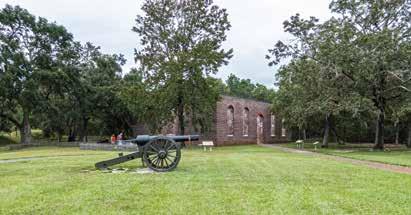
Brunswick Town, North Carolina
Brunswick Town offers a glimpse into the history of both the American Revolution and the Civil War. This was once a thriving colonial town and was a popular trading port along the Cape Fear River. It was the site of multiple attacks during the Revolutionary War, which caused most of its residents to flee to safety in cities like Wilmington and New Bern. With the town left in ruins, it was turned into Anderson Fort as a stronghold for the confederate army in 1862. Today, you can walk through what remains of St. Phillips Church and even see indentations where cannon balls struck the church during the Civil War.
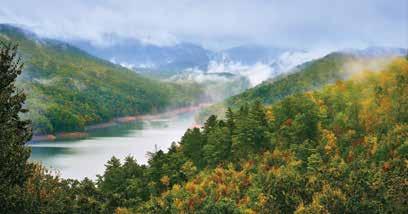
Fontana Lake, North Carolina
The underwater town of Judson was once home to roughly 600 residents and is one of North Carolina’s best-kept spooky secrets. This small town had been a thriving settlement with shops, schools and even a sawmill…that is, until Swain County started to sell off plots of land to the government for the construction of the Great Smoky Mountains National Park and Fontana Lake in the 1930s. The town’s residents had to seek refuge, and what remained of Judson was submerged forever. You can occasionally catch a glimpse of the town when the lake is very low.
Lost Cove, North Carolina
The Southern Appalachian Highlands Conservatory recently bought this land and is in the process of integrating it into the Pisgah National Forest. This old river town came to be during the time of the Civil War, starting out as an agricultural community (with a little moonshining as a side gig). The railroad came in some years later, which helped transform Lost Cove into something of a success in the logging and mining business. However, business did not boom for very long. The town became too remote when the train stopped making stops there and the residents all moved away. Lost Cove is only accessible by hike on the Lost Cove Trail off Flat Top Road near Burnsville, NC.
Elkmont, Tennessee
In the early 1900s, Elkmont was known for the Appalachian Club, according to representatives of Great Smokey Mountain National Park. The club consisted of a group of wealthy Blue Ridge families who built cabins and a clubhouse for themselves on the Elkmont land. It soon became an exclusive retreat for those with enough money and prestige to buy into the opportunity.
When the plan for the Great Smokey Mountain National Park began to be ramped up, Elkmont had to shut down and sell the land to the state government. Members of the community managed to work out a deal that included lease agreements for life during this transition.
The Appalachian Club is now part of the Great Smoky Mountains National Park. The area is protected by the National Register of Historic Places and there are plans to restore 19 of its buildings. Elkmont, just 15 minutes from Gatlinburg, is easily accessible by way of Elkmont campground. There are trails, a cemetery, and dilapidated buildings to admire, and refurbished buildings that can be explored and even rented for special occasions.
If you love exploring, enjoy the outdoors and have an interest in history…these locations will fulfill all those desires. Take time out to enjoy these special places and look carefully for the clues left behind that tell us what life was like in another time.

THE Fancy Fork
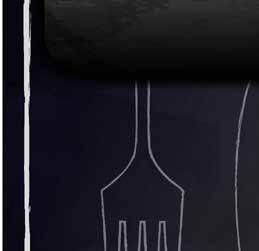



BY LAUREN SEPHTON


As we round out the last few weeks of the summer season, we couldn’t let these Easy and Quick Corn Fritters miss their moment. Their crunchy crust and fluffy inside make for the most divine appetizer, perfect for any upcoming Labor Day festivities!

Corn is full of key nutrients, from a variety of B vitamins to potassium, which supports healthy blood pressure, muscle contractions, and healthy heart functions. In fact, did you know that corn provides about 10 times more vitamin A than most other grains? And aside from supporting the immune system, Vitamin A also helps to protect against cognitive decline.





In addition, corn supplies your body with protective antioxidants like lutein and zeaxanthin, which helps to support healthy eyes and has been shown to reduce the risk of macular degeneration and cataracts. And if you’re lucky to find blue and purple corn, they are particularly excellent in fending off inflammation and guarding against oxidative stress.



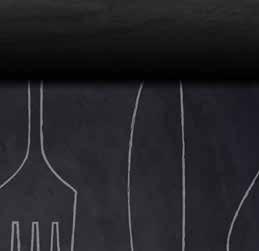
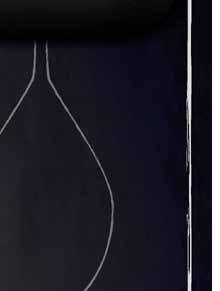
Easy and Quick Corn Fritters


PREP TIME: 10 MIN | COOK TIME: 15 MIN | TOTAL TIME: 25 MIN SERVINGS: 12-15 FRITTERS
INGREDIENTS 3 cups Corn Kernels (about 3 fresh corn cobs) 1 cup All-purpose Flour ½ Green Bell Pepper, finely chopped 1 Tablespoon Sugar 1 teaspoon Baking Powder 2 large Eggs, whisked ¾ cup Whole Milk Olive Oil, or Vegetable Oil, for frying Sliced Scallions, for serving Garlic Aioli, for serving

INSTRUCTIONS: 1. In a large bowl, mix together the corn kernels, green bell pepper, flour, sugar, baking powder, salt, and black pepper until well-combined. 2. Add in the whisked egg and milk. Stir until well-combined. 3. Line a wire rack or plate with paper towels. 4. In a large sauté pan over medium-high heat, add in the olive oil to heat up for 2-3 minutes, or until hot. 5. Once hot, add 2-3 Tbsp. batter in a mound on the pan, then use the back of a spoon to spread it into a flat, circular shape. Cook for 2-3 minutes, then flip to cook an additional 2-3 minutes, or until golden brown and crispy. 6. Transfer each fritter to the paper towels to drain any excess oils, then season with salt immediately. Repeat with remaining batter. 7. To serve, garnish with scallions and a garlic aioli for dipping. Now that you’ve mastered the art of fresh corn kernels, it’s time to grab your fork and enjoy the last few weeks of the summer season delights!










